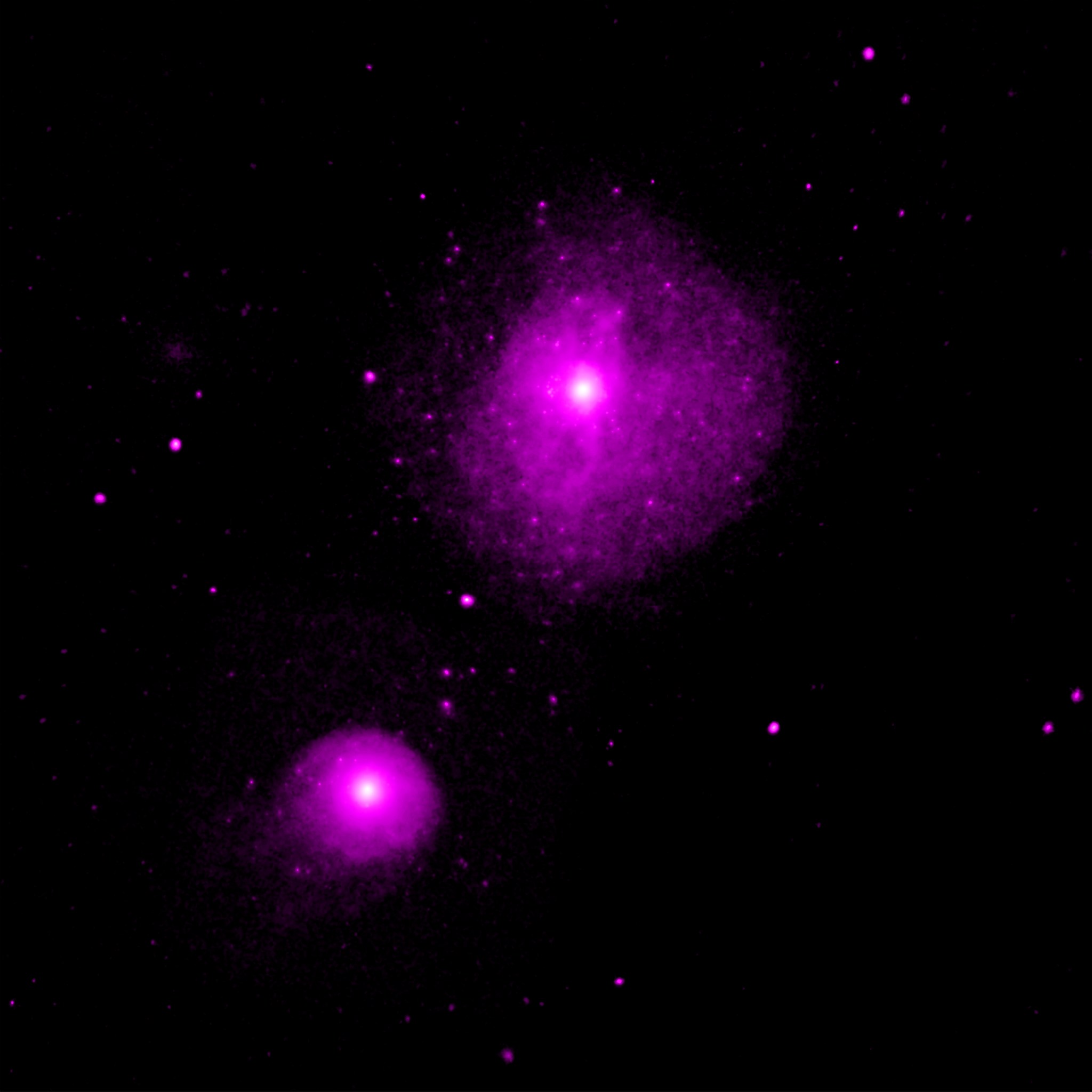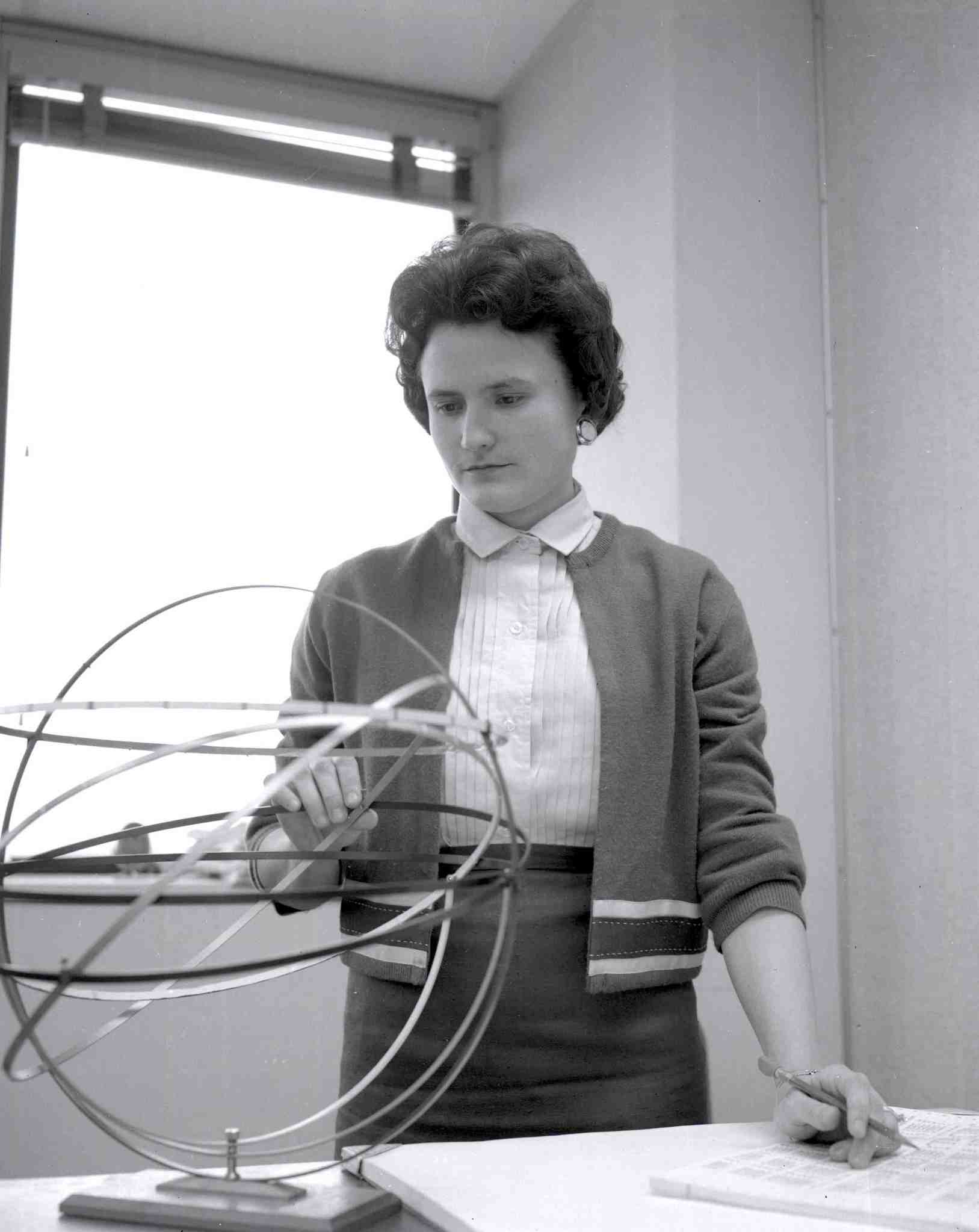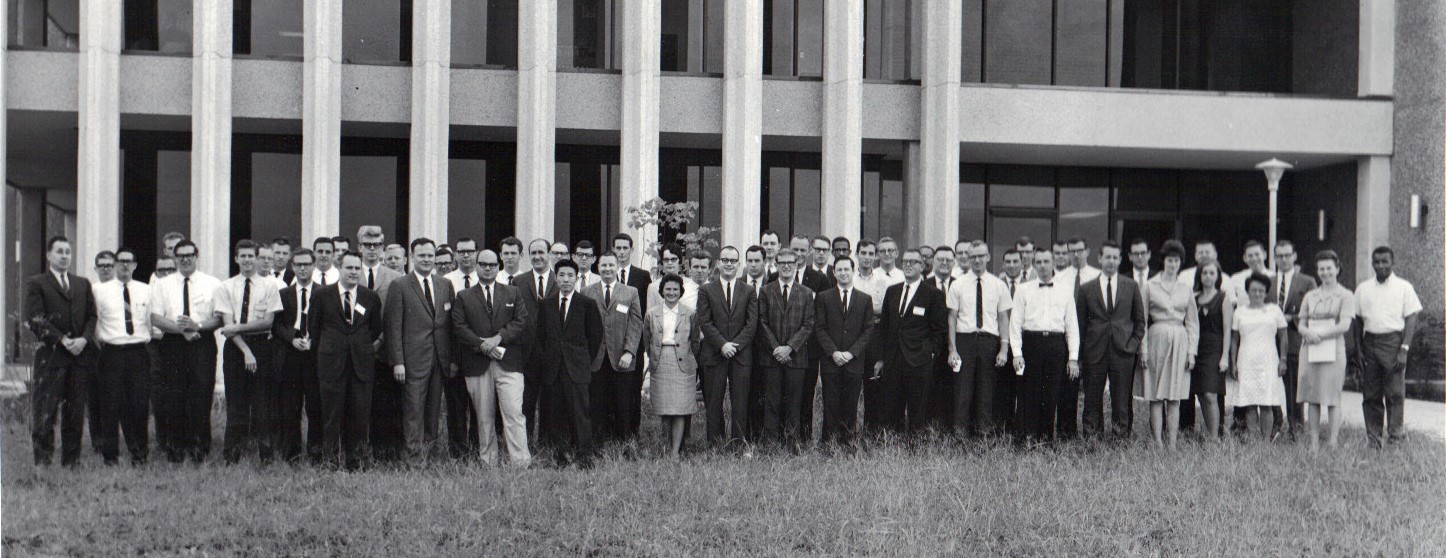In This Week’s Star
- Alabama Plays Vital Role in Missions to Moon and Beyond
- NASA Makes Progress Assembling Massive SLS Core Stage
- ‘Pass the Torch’ Panels in June Help Tell the Story of Apollo
- Michigan Business Creates Tool to Assemble Giant SLS Core Stage
- Marshall’s David Burns Moderates Tennessee Valley Corridor Summit Panel
- Chandra Finds Stellar Duos Banished From Galaxies
- Honoring the Women of Marshall: Ethel Heinecke Bauer
- Lunar Reconnaissance Orbiter Mission Highlighted on ‘This Week @NASA’
- This Week in NASA History: Marshall Successfully Static-Fires S-IC-2 – June 7, 1966
Alabama Plays Vital Role in Missions to Moon and Beyond
The path to the Moon has run through Alabama since the earliest days of the nation’s space program. Today, work in Huntsville and across the state is advancing the most powerful rocket America has ever built and the Artemis Program to land humans on the Moon by 2024.
NASA’s Marshall Space Flight Center creates a significant economic impact by supporting thousands of jobs and investing millions of dollars in research and development. It helps drive an innovation-based economy in Alabama and throughout the United States. The center generates contracts across nearly every category of manufacturing or service production. NASA reaches all 67 Alabama counties through education, business, partnerships and other innovative ways to engage the state with the agency’s ambitious national goals.
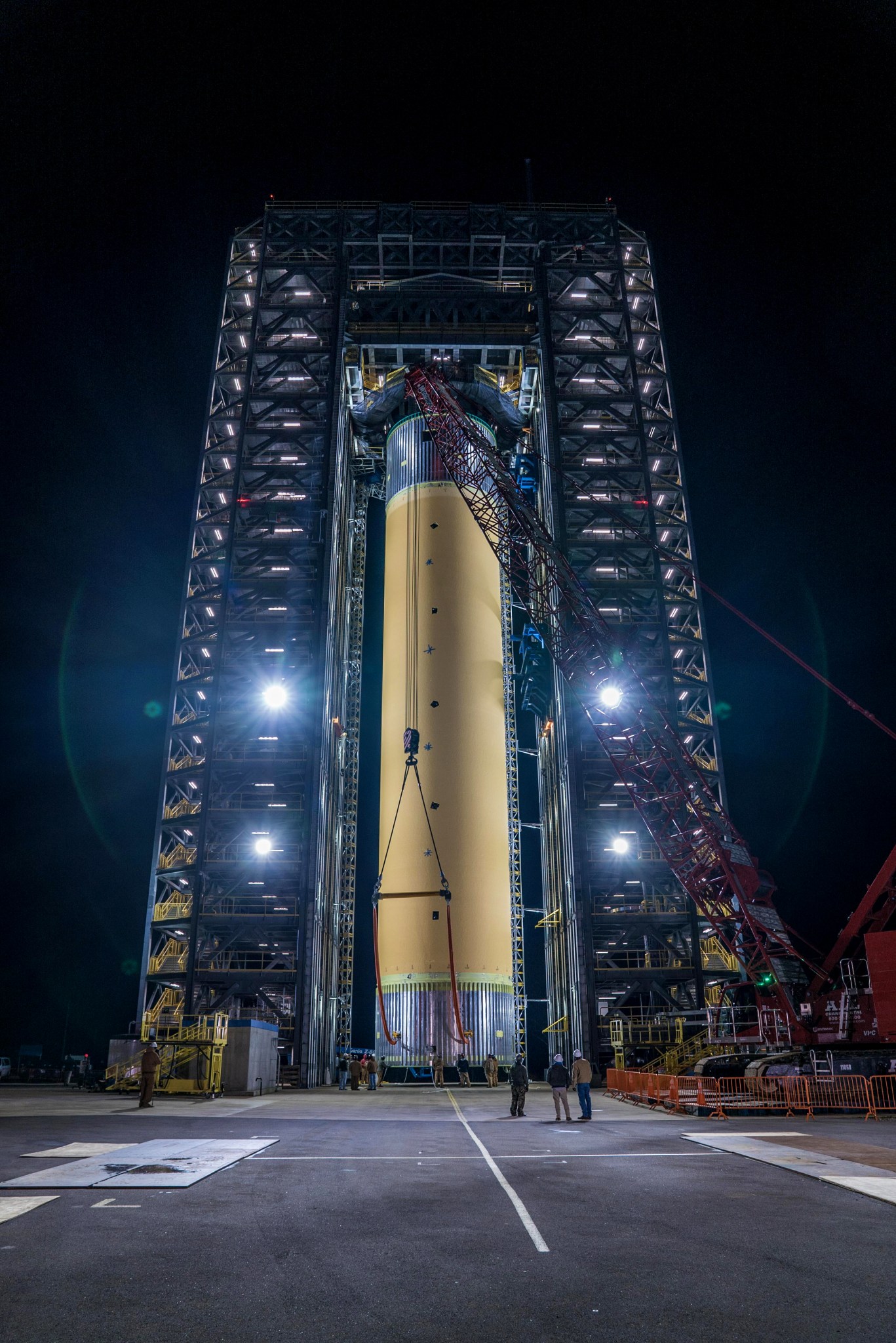
Rocket City
Much of Marshall’s work is tied to the Space Launch System rocket that will power human exploration of the Moon and a new generation of missions. SLS is America’s rocket, with men and women from almost every state working to move the nation forward to the Moon. It’s also a critical part of Alabama’s legacy of mission-critical design, development and integration of the systems for space exploration and scientific missions.
NASA’s plans to land humans on the lunar south pole by 2024 build on Marshall’s expertise. The rocket scientists at Marshall designed, built, tested and helped launch the giant Saturn V rocket that carried Apollo astronauts to the Moon. They also built new rocket engines, solid rocket boosters and propellant tanks for the space shuttles, built sections of the International Space Station and now manage science work aboard the station from the Payload Operations Integration Center.
SLS and the Orion spacecraft, in which astronauts will travel to the Moon, are the backbone of NASA’s sustainable deep space exploration systems. The SLS team has recently:
- Built and tested the solid rocket boosters and the core stage RS-25 engines. All the booster motors are ready for the first two flights, and 16 engines are ready for the first four missions.
- Assembled four-fifths of the 212-foot core stage for the Artemis 1 mission by connecting the 66-foot-tall forward part of the rocket’s massive core stage with the liquid hydrogen propellant tank. This helps prepare for its final assembly and integration with the engine section and four RS-25 engines.
- Delivered the Pathfinder, a full-scale simulator of the rocket’s core stage. This is helping NASA learn to work with the real core stage.
- Loaded a test version of the enormous liquid hydrogen tank that fuels the rocket’s RS-25 engines into a test stand at Marshall. It will be exposed to simulated stresses of a space launch.
- Outfitted the SLS stage adapter, which was built at Marshall and connects the core stage of the rocket with its interim cryogenic propulsion stage.
Gateway
Astronauts will travel to the Gateway in lunar orbit for expeditions to the surface of the Moon. Marshall is supporting development of a potential deep space habitation element for Phase 2 of the Gateway, which will help the agency establish sustainable missions on and around the Moon by 2028.
Marshall and Alabama have also played key roles in additive manufacturing, or 3D printing, from rocket engine development advances to 3D printing on the station. This technology has revolutionized what we are able to do in space.
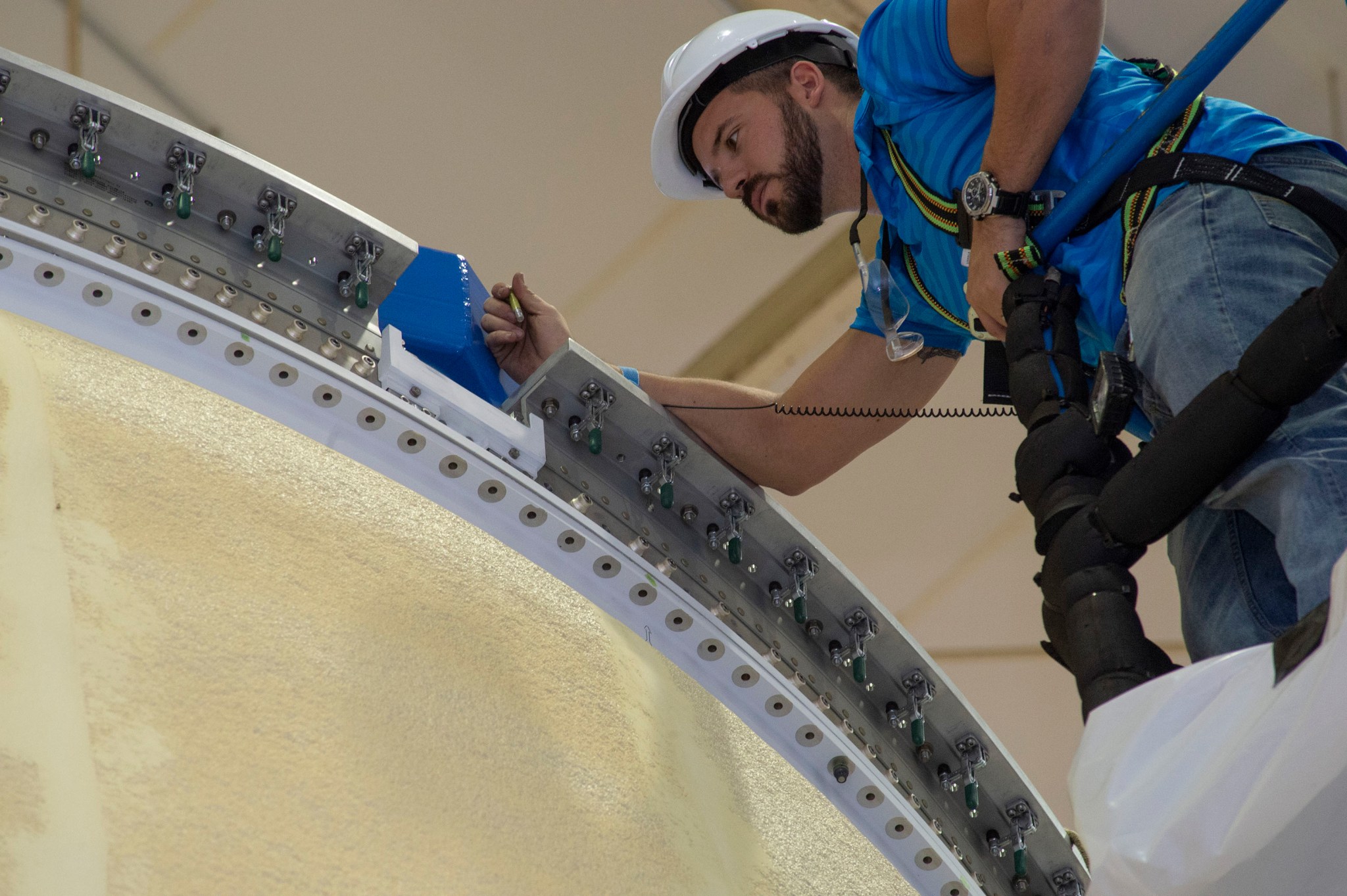
Homegrown
NASA has also invested millions in state university programs and in contracts with large and small businesses. Marshall has more than 50 active Space Act Agreements with industry, academic, non-profit and other government agencies based in Alabama, including the University of Alabama system, Auburn University, Alabama A&M University and the University of North Alabama.
Next generation leaders in the fields of science, technology, engineering and mathematics from across the world also gain important experience through Marshall’s Student Launch and Rover Challenges.
NASA’s presence in Alabama is leading to a human presence on the Moon. Throttle up!
NASA Makes Progress Assembling Massive SLS Core Stage

NASA and Boeing technicians have completed the second of three major activities to join the large structural parts of the core stage for NASA’s deep space rocket, the Space Launch System. Technicians at NASA’s Michoud Assembly Facility connected the liquid hydrogen tank to the forward join, or upper part, of the core stage. This stage and its four RS-25 engines will produce 2 million pounds of thrust to help launch the Artemis 1 Mission, the first integrated flight of SLS and the Orion spacecraft to the Moon. Together, the 66-foot-tall forward join and the liquid hydrogen tank make up most of the core stage. The entire core stage, which will include the engine section and four RS-25 engines, will measure 212 feet. It will be the tallest rocket stage the agency has built since the Saturn V stages were manufactured at the same Michoud rocket factory. (NASA)
‘Pass the Torch’ Panels in June Help Tell the Story of Apollo
By Will Bryan
As NASA’s Marshall Space Flight Center celebrates the accomplishments of the Apollo program and prepares for future exploration, the center and the city of Huntsville are focused on sharing the experiences with a new generation. The “Pass the Torch Apollo Legacy Panels” will be held throughout the year, covering topics from the earliest days of the German rocketeers to NASA’s new Space Launch System rocket.
Here are the scheduled June lectures:
June 6: SLS — The Next Giant Leap — by the Numbers, 2:30 p.m., Discovery Theater, U.S. Space & Rocket Center
June 13: Engineers of the Apollo Era, 2:30 p.m., Discovery Theater, U.S. Space & Rocket Center
June 20: Center Directors of Marshall Space Flight Center, 2:30 pm, Discovery Theater, U.S. Space & Rocket Center
June 20: Back to the Moon and Beyond, 6 p.m., Huntsville-Madison County Public Library, downtown branch
June 27: Lunar Roving Vehicle — Moon Buggy, 2:30 p.m., Discovery Theater, U.S. Space & Rocket Center
All lectures are free and open to the public. For more information about the events at the U.S. Space & Rocket Center, visit here. For more information about the events at the library, visit here.
Bryan, an ASRC Federal/Analytical Services employee, supports the Office of Strategic Analysis & Communications.
Michigan Business Creates Tool to Assemble Giant SLS Core Stage
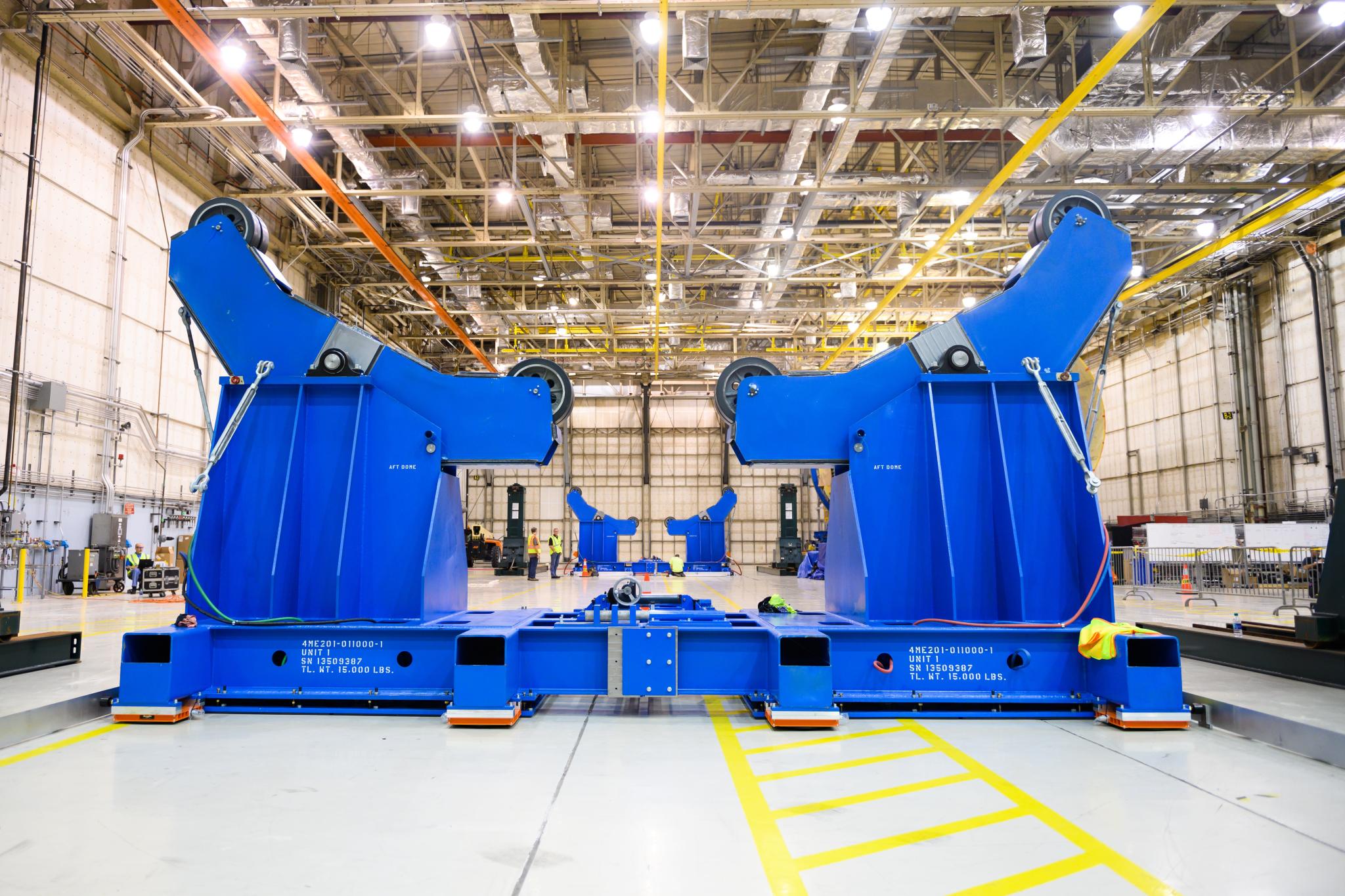
More than 3,200 businesses across the country support NASA’s return to the Moon, and one recently delivered a tool to help NASA speed up assembly on the massive core stage for the agency’s Space Launch System. Michigan-based Futuramic delivered the tool to NASA’s Michoud Assembly Facility in May. The tool cradles the 130-foot-long liquid hydrogen tank — the largest component of the core stage — in a stable position. The tool played a vital role in helping NASA and Boeing engineers complete the second of three major joins for the core stage in May. Futuramic, which has facilities in Detroit and Warren, is one of more than 78 Michigan companies supporting the production of SLS. (NASA)
Marshall’s David Burns Moderates Tennessee Valley Corridor Summit Panel
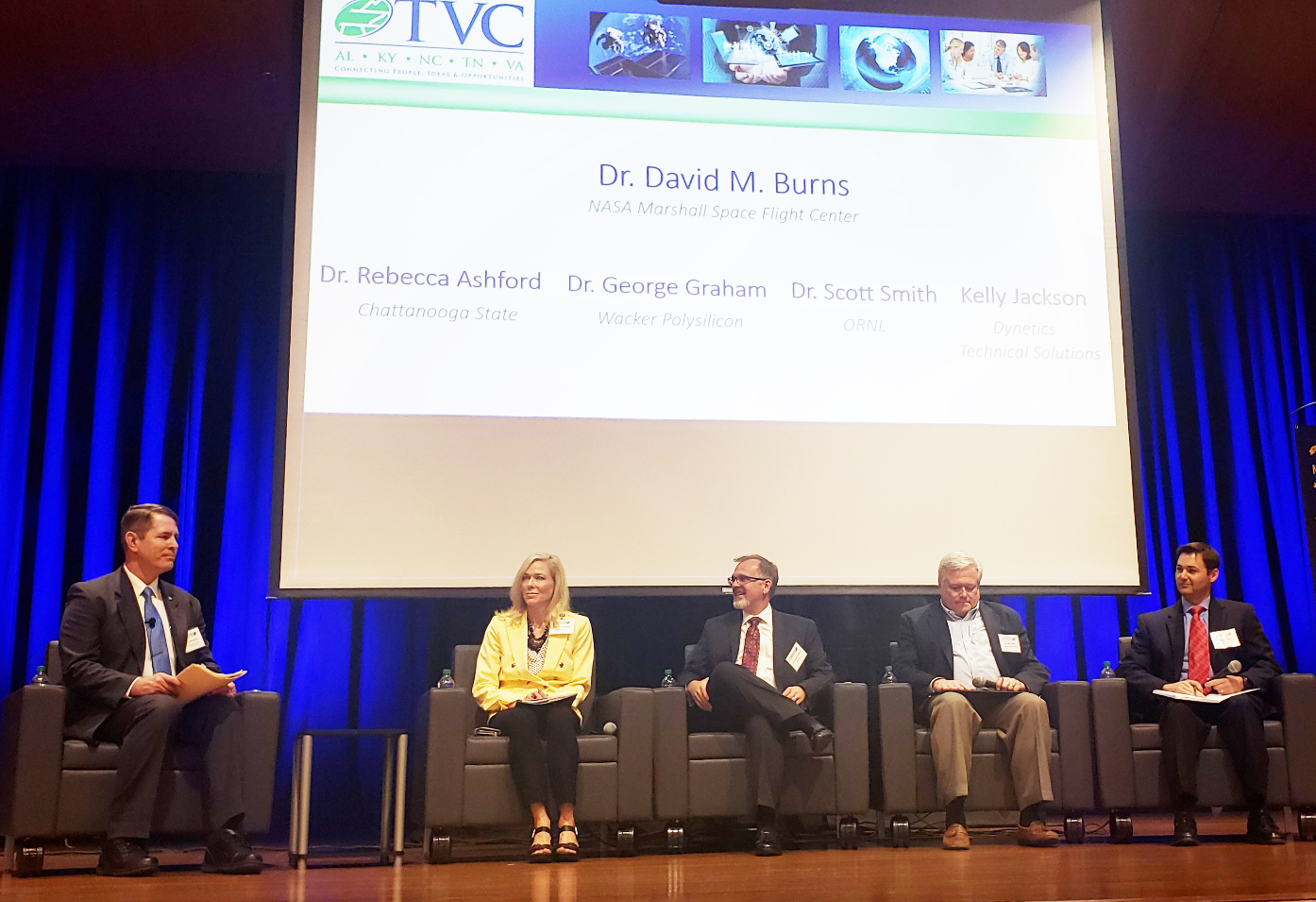
David Burns, left, manager of the Science and Technology Office at NASA’s Marshall Space Flight Center, serves as guest moderator for a panel on advanced manufacturing at the 2019 Tennessee Valley Corridor Summit on May 30 at the University of Tennessee in Chattanooga. Panelists, from left, are: Rebecca Ashford, president of Chattanooga State Community College; George Graham, director of operations at Wacker Polysilicon; Scott Smith, group leader of Machining and Machine Tool Research at the Department of Energy’s Oak Ridge National Laboratory; and Kelly Jackson, principal mechanical engineer for Advanced Materials and Nanosystems Group at Dynetics Technical Solutions. Audience members learned how the TVC hosts federally funded efforts to develop new materials, processes and techniques that can be transferred into the private sector. (NASA/Garry Willis)
Chandra Finds Stellar Duos Banished From Galaxies
Scientists have found evidence that pairs of stars have been kicked out of their host galaxies. This discovery, made using data from NASA’s Chandra X-ray Observatory, is one of the clearest examples of stellar pairs being expelled from their galactic base.
Astronomers use the term “binary” system to refer to pairs of stars orbiting around each other. These stellar pairs can consist of combinations of stars like our Sun, or more exotic and denser varieties such as neutron stars or even black holes.
Neutron stars form when a massive star explodes as a supernova and the core of the star collapses onto itself. Under certain conditions, these gargantuan blasts that create the neutron star are not symmetric. The recoil effect can kick the star with such force that it is expelled from the galaxy where it resides. These new Chandra results show that sometimes a companion star is forced to exit the galaxy as well.
“It’s like a guest that’s asked to leave a party with a rowdy friend,” said Xiangyu Jin of McGill University in Montreal, Canada, who led the study. “The companion star in this situation is dragged out of the galaxy simply because it’s in orbit with the star that went supernova.”
NASA’s Marshall Space Flight Center manages the Chandra program for NASA’s Science Mission Directorate in Washington. The Smithsonian Astrophysical Observatory in Cambridge, Massachusetts, controls Chandra’s science and flight operations.
How do astronomers look for these banished pairs? If the companion star is close enough, then matter from it will swirl toward the denser neutron star and form a disk around the neutron star. The strong gravitational forces from the neutron star cause the material in this disk to move more rapidly as it approaches, and frictional forces in the disk heat it to tens of millions of degrees. At these temperatures, the disk glows in X-ray light.
Jin and her collaborators found signatures of so-called X-ray binaries outside of galaxies in a comprehensive study of the Fornax galaxy cluster made with Chandra data collected between 1999 and 2015. This cluster is relatively nearby at a distance of some 60 million light years from Earth in the constellation sharing its name.
By combining the Chandra dataset with optical observations, researchers made a census of X-ray sources within about 600,000 light years of the central galaxy in the Fornax cluster. Astronomers concluded that about 30 sources in the Fornax cluster were likely to be pairs of stars that had been kicked out of the center of their host galaxies.
The team also found about 150 other sources that appear to be outside the stellar boundaries of the galaxies within the cluster. These were determined, however, to have origins other than expulsion. One possibility is that they reside in the halos, or far outer reaches, of the Fornax cluster’s central galaxy, where they were formed. Other possible explanations are that they are X-ray binaries that were pulled away from a galaxy by the gravitational force of a nearby galaxy during a flyby, or left behind as part of the remnants of a galaxy stripped of most of its stars by a galactic collision. Such interactions are expected to be relatively common in a crowded region like the one in the Fornax cluster.
A paper describing these results appears in the May 1 issue of The Astrophysical Journal and is available online. For more information, visit here.
Honoring the Women of Marshall: Ethel Heinecke Bauer
By Brian Odom
Born in Troy, New York, Ethel Heinecke Bauer was raised in a talented family. Her mother, Grace Ethel Heinecke, was a registered nurse while her father, Howard Elwin Heinecke, held doctoral degrees in both electrical engineering and physics from Rensselaer Polytechnic Institute.
When she was a child, Bauer’s family relocated to accommodate her father’s work for the government during World War II, first to Maxwell Field in Montgomery, Alabama. When the Army Air Corps opened Eglin Field as a bombing and gunnery test site in October 1940, the family then moved to Valparaiso, Florida, and Heinecke began his lifelong career at what today is known as Eglin Air Force Base.
Heinecke’s work had a strong bearing on his daughter’s future profession. However, Bauer related in a 1965 interview that her father — far from encouraging her to follow in his intellectual footsteps — had advised her to bow to the inevitable in a world with incredible limitations for women, and to instead “get married, settle down and be a good housewife.”
Bauer had other ideas.
Bauer attended Huntingdon College in Montgomery and earned bachelor’s degrees in mathematics and business administration. She spent the periods between semesters back at Eglin, moving through positions as stenographer, fright traffic clerk, mathematical computer aide and engineering aide. The launch of the Soviet satellite Sputnik in October 1957 captivated Bauer’s attention and convinced her to change her major to mathematics.
Later, while attending Vanderbilt University in Nashville, Tennessee, on a Ford Foundation scholarship, Bauer became intrigued by opportunities working with the space program two hours south at NASA’s Marshall Space Flight Center. In February 1961, she accepted an offer to become a mathematician in the Aero-Astrodynamics Laboratory at Marshall.
In September 1961, Bauer moved to Florida to marry Bruce Bauer, an electrical engineer with General Electric Co. She took a position as a mathematician at GE, developing flight paths and dispersion analyses for military rockets, including a classified flight test at Eglin — Firefly Ethel — named in her honor.
After 18 months in Florida, the couple moved to Huntsville, both taking positions at Marshall in the Apollo program. Ethel Bauer worked as an aerospace engineer in the Applied Guidance and Flight Mechanics Branch of the Aero-Astrodynamics Laboratory. She was principally engaged with planning lunar trajectories, including the free return trajectory that allowed for a safe return in the event of a systems failure — a trajectory used on Apollo 13 and the first three Apollo flights to the Moon. She also spent time in the Mission Analysis Section developing targeting conditions that would cause the on-board computer to cut off thrust in the Saturn V S-IVB stage.
In May 1971, Bauer was named lead developer of a mission analysis simulation technique designed to evaluate and optimize the Earth Resources Experiment Package program for Skylab. Her work on the program sought a better understanding of the factors influencing the available opportunities for Earth observations, including orbital parameters, solar lighting at the target, and general system limitations. In the technical report, “An Evaluation of Earth Resources Observation Opportunities from an Orbiting Satellite,” Bauer and co-author B.S. Perrine Jr. offered an optimization program for orbital inclination, launch time and launch date.
Then-Marshall Director Eberhard Rees nominated Bauer for the Federal Woman’s Award in June 1971. Rees credited her with the development of targeting procedures for Apollo crewed lunar missions, outlining procedures for guiding the S-IVB stage, helping develop the slingshot method which disposed of the spent S-IVB stage, and later modification of that method for guiding the spent stage to the Moon for additional experiments.
In 1974, Bauer transferred from Marshall to NASA’s Ames Research Center, where she spent 19 years in the Airborne Missions and Applications Division of the Astronautics Office. She worked in the Earth Resources Observation programs on the development of ground communications. She also worked on the Comet Nucleus Penetrator Project, served as deputy chief of the System Development branch of the Space Exploration Projects Office and became chief engineer for the Space Station Biological Research Facility Project. During that time, Bauer continued to make significant contributions to the space program and mentored many of those who are now leaders in the field.
Bauer retired Jan. 31, 1993, after 32 years of federal service. Over the course of her career, she made instrumental contributions to several NASA programs, ranging from humanity’s first steps on the lunar surface to using satellite data to increase crop yields in agriculture, along with technology transfers in climate, and communications.
Bauer’s career was one spent breaking barriers and bringing others along with her.
Odom is a historian at NASA’s Marshall Space Flight Center.
Lunar Reconnaissance Orbiter Mission Highlighted on ‘This Week @NASA’
Data from NASA’s Lunar Reconnaissance Orbiter mission are featured in “This Week @NASA,” a weekly video program broadcast on NASA-TV and posted online.
A new animation is available on NASA’s Scientific Visualization Studio site that shows the locations of the six Apollo Moon landings, including precise coordinates as determined by data from LRO. Also highlighted are the total number of hours that each lunar module was on the surface and the number of hours that the astronauts were outside during extravehicular activity.
LRO is a project of the Science Mission Directorate’s Discovery Program, managed by NASA’s Marshall Space Flight Center.
View this and previous episodes at “This Week @NASA” on NASA’s YouTube page.
This Week in NASA History: Marshall Successfully Static-Fires S-IC-2 – June 7, 1966
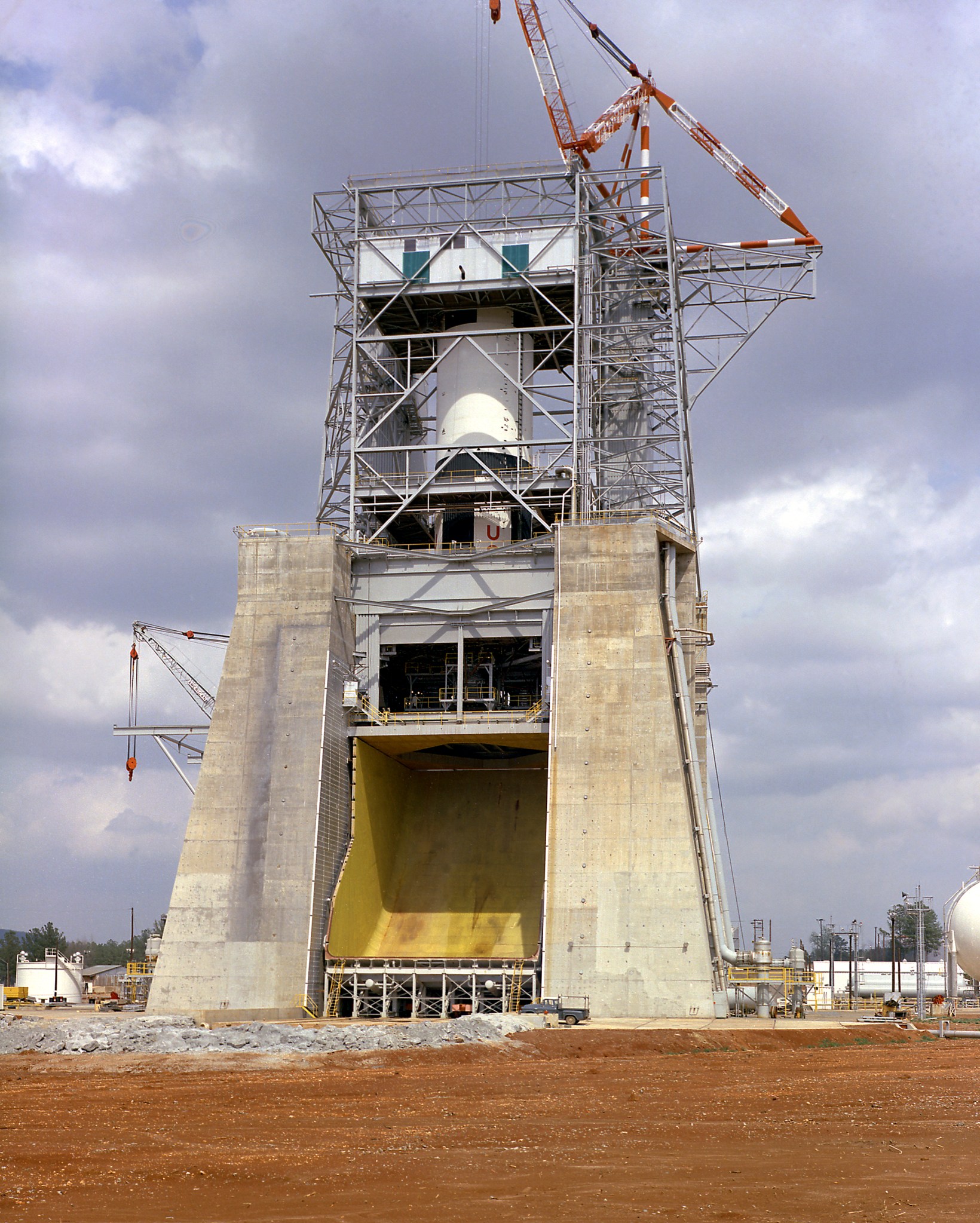
This week in 1966, NASA’s Marshall Space Flight Center successfully static-fired S-IC-2, the first stage of the second Saturn V flight vehicle. The stage was powered by five F-1 engines, each capable of producing 1.5 million pounds of thrust. The S-IC-2 was one of the first two flight models of the S-IC stage and was used on the Apollo 6 mission. Here, the S-IC-T, a static firing test stage, is installed and awaits the first firing of all five F-1 engines at the Marshall static test stand. Now through December 2022, NASA will mark the 50th anniversary of the Apollo Program that landed a dozen astronauts on the Moon between July 1969 and December 1972, and the first U.S. crewed mission — Apollo 8 — that circumnavigated the Moon in December 1968. The NASA History Program is responsible for generating, disseminating and preserving NASA’s remarkable history and providing a comprehensive understanding of the institutional, cultural, social, political, economic, technological and scientific aspects of NASA’s activities in aeronautics and space. For more pictures like this one and to connect to NASA’s history, visit the Marshall History Program’s webpage. (NASA)

























